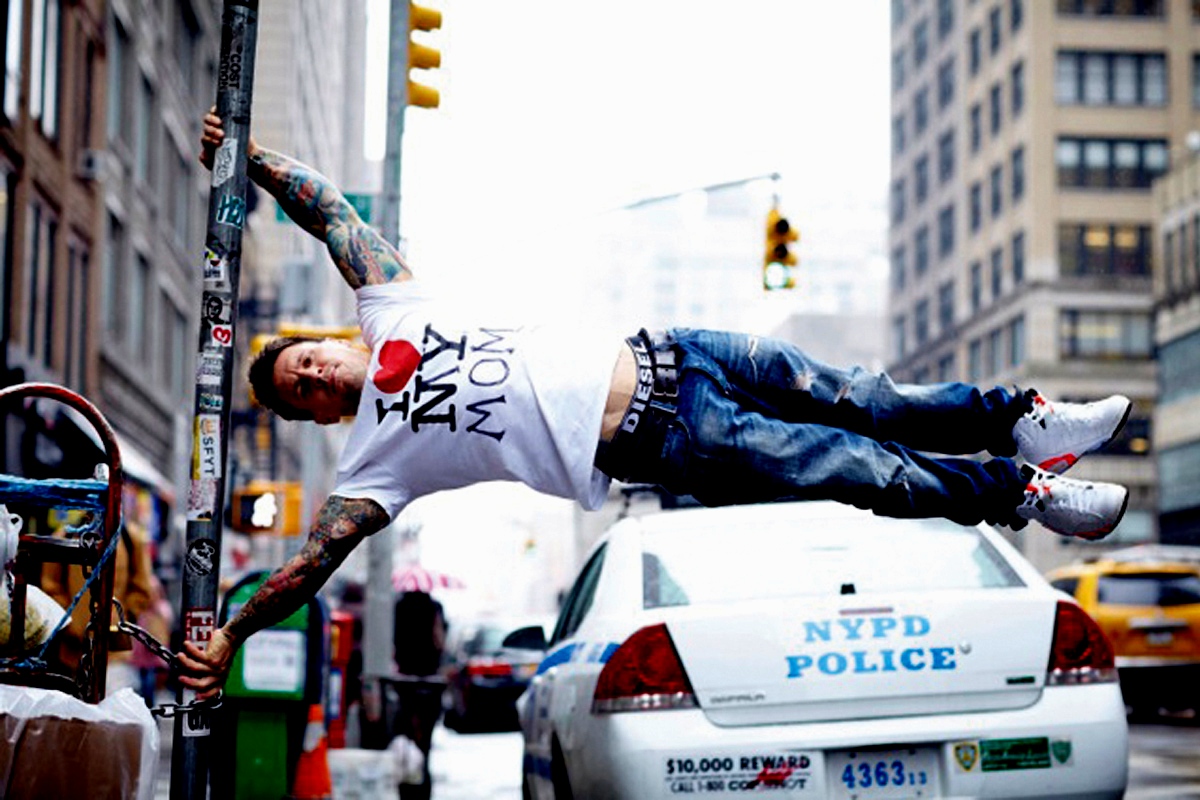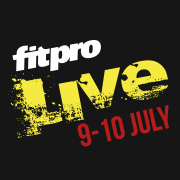Top image credit: Neil Gavin
Following on from the popularity of Dan Edwardes’ wise words in ‘Parkour: Primitive Sophistication’ last week, the UK’s number-one ranked calisthenics athlete Stephen Hughes Landers shares his session overview for FitPro LIVE 2015 and explains why bodyweight training is less intimidating than gym equipment.
It’s important to make the distinction between the crazy calisthenics stuff you see people doing and the content of a typical group exercise class. While the iconic exercises, such as the muscle up and human flag, are definitely part of the long-term aims of training, we don’t set out to get everyone doing freestyle flips and tricks as quickly as possible.
Like any form of training, we start with the basics, build a sound foundation of technique and strength, and offer a whole-body workout, including conditioning. Our session at FitPro LIVE will go through how we structure a session, as well as how to help participants progress towards one of the iconic exercises: the muscle up.
Session
Master the muscle up!
In this session, participants will learn the progressions and regressions needed to master the most iconic calisthenics move – the muscle up!
I will demonstrate key training methodologies that will allow those of all fitness levels to progress the famed ‘iconic moves’. The training methodologies can be incorporated into your clients’ workouts.
Book your ticket to FitPro LIVE 2015 today! Click here
Flexibility
Calisthenics is well suited to group training for many reasons but one that really stands out is the flexibility it provides the instructor and participants. We can accommodate those of all fitness levels and abilities in the same session, as well as some very large numbers. It’s not unusual for there to be 100 people in our group sessions.
Sessions don’t necessarily need to involve equipment, which provides a huge amount of flexibility when deciding upon the location. We run sessions in gyms, parks and other public spaces, but the sessions outside of the gym are often the most popular. For an instructor or operator this helps keep costs down but it also makes the sessions more accessible for the participants.
Because we’re not in the gym and aren’t using gym equipment, people come along who otherwise wouldn’t exercise. They’re the sort of people who don’t feel confident walking into a gym and find conventional gym equipment intimidating. They see us working out using just bodyweight and think “I could do that”. In my opinion, this makes calisthenics perfect for engaging the huge numbers of people that don’t exercise and wouldn’t dream of joining a gym.
Community feel
Sustained participation is crucial in helping people to reach their fitness goals, and many classes and fitness movements try to create a buzz or social scene around their activity so people feel part of something more than just an hour-long workout. There really is a genuine community feel to our sessions – perhaps down to the inclusive and supportive nature of the classes – so that people quickly feel part of the family. A big reason for this is that everyone does the same workout, regardless of their fitness level. The exercises themselves may be adapted slightly to make them easier or harder, but everyone does the same training each session.
I often say that imagination is your only limitation and this can be applied to many aspects of calisthenics. There are countless exercises and variations of these exercises for people to try, so no two sessions need to be exactly the same. When an instructor understands how and when to progress/regress exercises, as well as how to incorporate equipment such as resistance bands, workouts will continually challenge those of all fitness levels. Our instructor programme provides trainers with a host of different exercises and variations, as well as sample workouts so they can start leading sessions the following day.
Motivation
Once participants understand how to perform the basic exercises, they can do the workouts at home, or anywhere they like. While this could be viewed as a negative because participants may not need to return to classes, we actually see it as a positive. We find people are motivated to improve, training independently as ‘homework’ completed outside of our sessions. This means they progress much faster and see results, which in turn only helps to increase their motivation.
We find that participants are also motivated by a sense of achievement that cannot be matched by upping a weight in the gym or using a bigger gear on the bike. Moving from one version of an exercise to the next, getting your first pull-up or muscle up, represents a real triumph and the feeling of mastering your own body. Because there are so many different exercises (and forms of each exercise), participants always feel they are progressing and that the next milestone is just around the corner. The key thing is that these successes act as intrinsic motivation, which we know is so important for sustained participation.
Calisthenics has exploded in popularity and I think this is because it works for so many people on so many levels. Group sessions are perfect from an operator standpoint because they can be conducted in a variety of environments and don’t require a massive equipment outlay. They also appeal to those who otherwise wouldn’t exercise. With a relatively small amount of training, instructors can deliver varied, engaging sessions to those of all fitness levels. Because there are so many programming options available, there’s also plenty of scope for instructors to put their own stamp on sessions and to tailor content to their setting and participants.
About the author
Stephen Hughes Landers is the UK’s number one-ranked calisthenics athlete. In 2014, he represented Great Britain at the Street Workout World Cup and Street Workout World Championship. Stephen is one of only 50 people worldwide, and three in the UK, to have been selected as an official BarStarzz athlete, despite only taking up the sport full-time in 2013. Stephen epitomises the mantra ‘Eat, Sleep, BarStarzz’, aiming to help the calisthenics scene in the UK grow by instructing those of all fitness levels and abilities. Stephen, in conjunction with Sideways8 Training, has developed the UK’s first calisthenics training course for fitness professionals to enable them to incorporate effective calisthenics training into their programming.
To read our blog from last week: Parkour: Primitive Sophistication click here
This article was first published on the MyGroupFit blog










